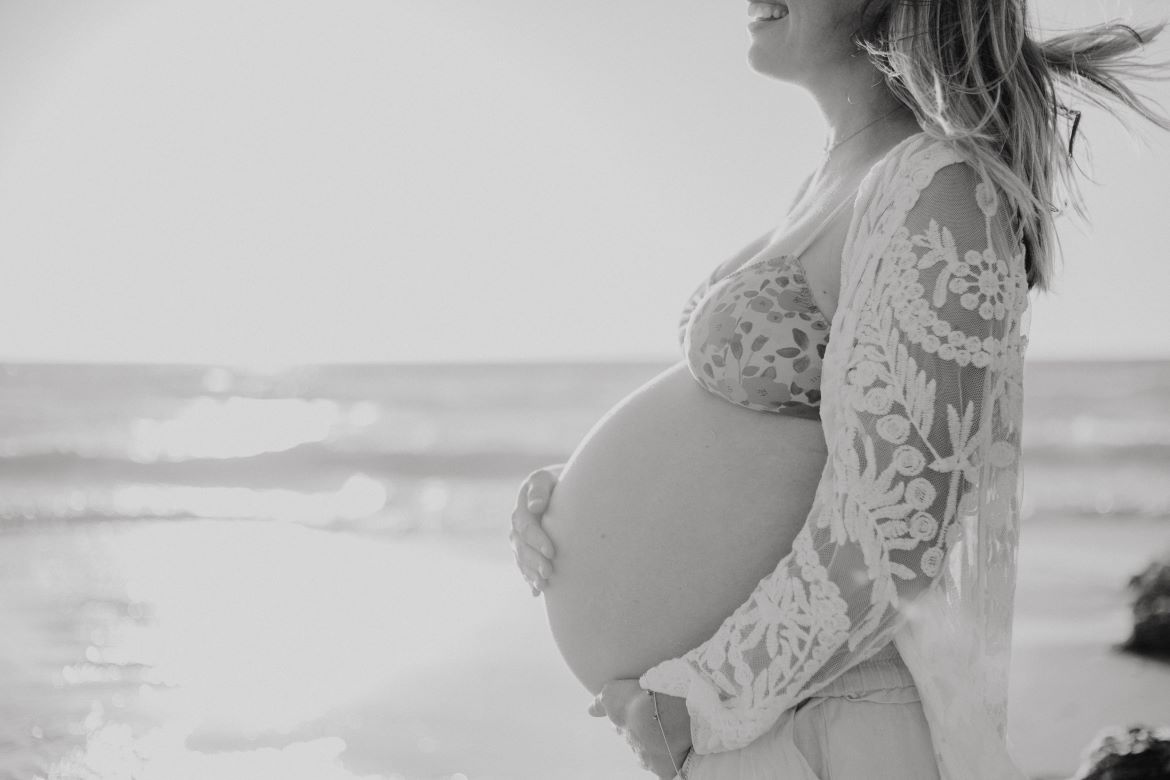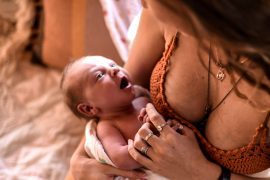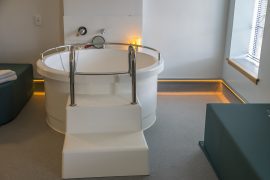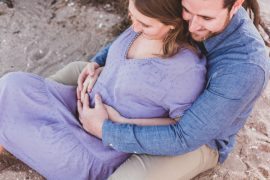By Claire Eccleston, Midwife, Spinning Babies approved trainer, Biodynamic Craniosacral Therapist. © 2020.
The following article is one in a series of twelve that will explore some of the main pelvic ligaments and structures that have a role in our reproductive wellbeing, and creating comfort in pregnancy and ease in birth. The following series of articles will explore the anatomy of the varying structures, discuss how the structures change in response to pregnancy and the postnatal period, and how the structures might affect comfort in pregnancy and ease in birth. They will also investigate and discuss ways to lovingly and gently support these structures so alignment, balance and comfort are optimised.
Did you know that the clitoris is not just a single small point just under the urethra (the pee hole) but that it actually looks like a peak of a triangle with little arms that extend down into the labia and around their vaginal opening? Did you know that this whole area is full of nerve endings and the potential for arousal and that when aroused, the whole of the clitoris swells and these swollen little arms help to make the vaginal opening snugger for love making? Did you know that a more detailed and correct anatomy of the clitoris was only discovered in the 1990s?
Women’s bodies, particularly our reproductive bodies, often remain mysterious to their owners, admirers and to science.
The dark, quiet, tucked-away form of the vagina has often meant that for many women their knowledge of their own bodies (and their amazingness) has remained dark, quiet and tucked away.
Shame has been a very powerful cultural and social tool in not only keeping the knowledge of our bodies quiet, but also keeping the knowledge of the pleasure, power and capacity of our bodies silent (because there is so much capacity for pleasure and power in our bodies).
Did you know that just like the motion and the tides, our womb/uterus is constantly moving, changing shape and position?
Female bodies swell and contract. Our pukus (bellies) swell and contract as our babies grow inside our bodies. During pregnancy, the uterus gets as big as to carry several babies, placentas and up to a litre of amniotic fluid. Our wombs swell and contract as we birth our babies, then our amazing uterus contracts right back down to the size of a small pear. Our breasts grow, expand and contract with milk and then may grow or decrease or increase in size as we age.
In anatomical drawings, we often see the uterus pictured sitting upright and central. In a non-pregnant state, the small pear of our uterus is constantly changing shape and position depending on our cycles, love making and even if our bowel or bladder is empty or full. Just like a hot air balloon tethered to the ground by many ropes, the uterus is supported by several ligaments, fascia and by the surrounding organs themselves. As there are no hard bones inside the pelvic bowl, the pelvic organs often use each other for support. Did you know that the uterus is actually attached to the bladder via the fascia? As previously mentioned, when our bladder is full, the uterus moves up to accommodate it and when it is empty, it settles down into a different position.
Let’s get to the round ligaments. The round ligaments are some of the ligaments predominantly responsible for helping the uterus maintain its position and centre and also to move with ease.
The round ligaments attach to the upper anterior quadrants of the uterus. One on each side. The ligaments travel down through the inguinal canal and the other end extends into the labia majora with the fibres coming in to end in the mons pubis. However, the exact spot where the ligaments end is different in each woman. Men also have round ligaments (embryologically, male and female babies begin the same way).
In a non-pregnant woman, the round ligaments are approximately 10-12 cm long and 1 cm wide. During pregnancy, the ligaments expand in both length and thickness. At the end of pregnancy, the ligaments can be up to 30-40 cm long. The round ligaments are folded into the peritoneum (the sheath that wraps everything like glad wrap up in our pelvic bowls and abdomens). The round ligament is also sheathed by the broad ligament (another article on the broad ligament to follow).
What do the ligaments do?
The round ligaments are important in lovemaking. When a woman is aroused, the labia majora swell and the round ligaments contract, pulling the uterus up and posteriorly. This increases the length of the vaginal canal and pulls the cervix into a tucked in posterior position to avoid it getting too ‘bumped’.
During pregnancy, the round ligaments are important for helping to stabilise the uterus. They can also help the uterus remain central and avoid it twisting and rotating.
In pregnancy, when the uterus is stable and central, there is lots of room for the baby to find a comfortable and easy position to route down and through for birth. Often when there is lots of room and comfort, a baby will lie in the left lateral position in pregnancy and then spiral down easily through the pelvis for birth. If the round ligaments are tight or one is tight and one is loose, the uterus can be pulled into a twist. In this situation, there can be less room in the lower segment of the uterus. Sometimes, the baby will respond trying to find the most available space by presenting in breech, posterior or by staying high in the pelvis.











